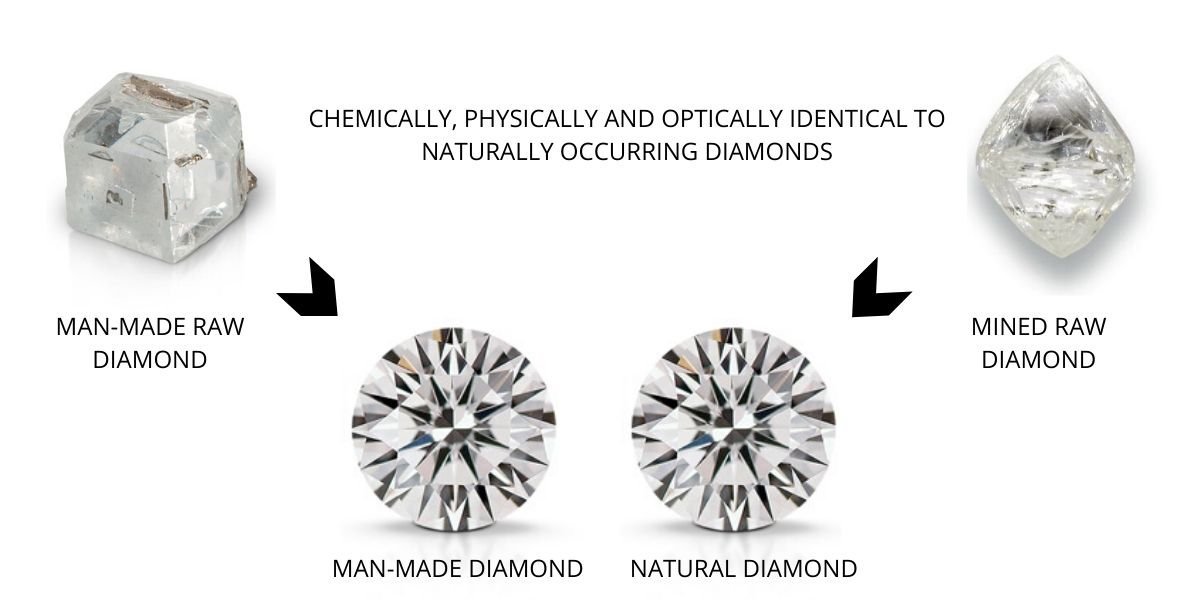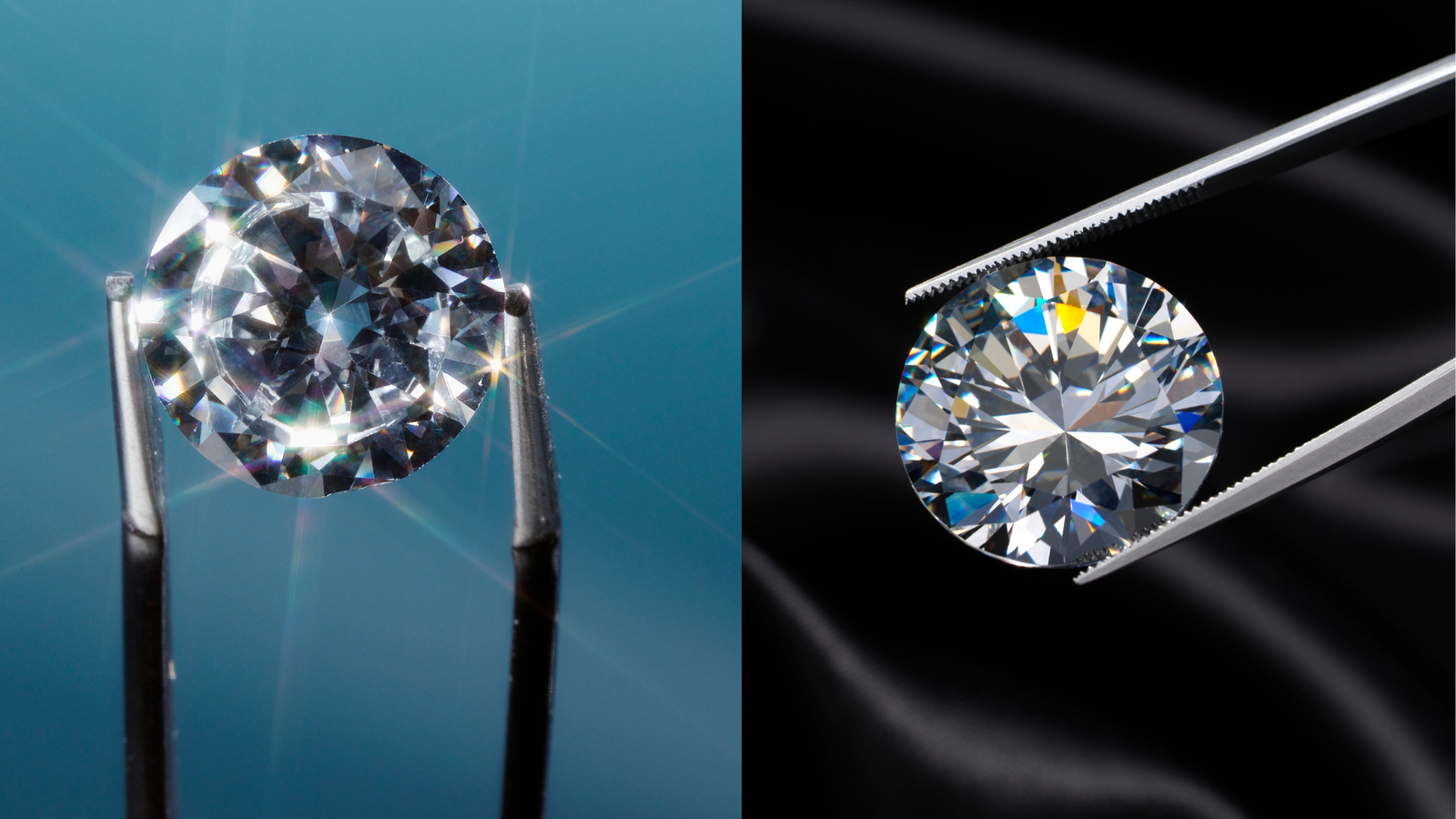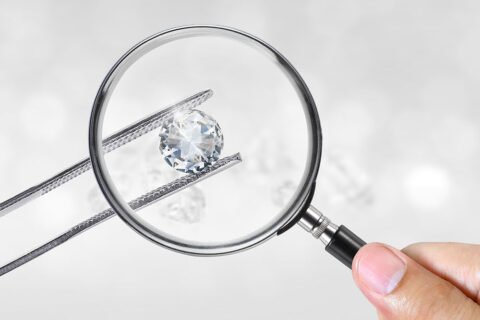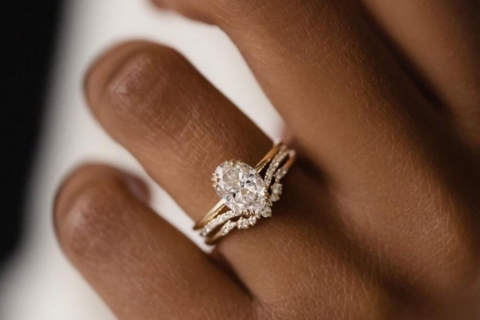Lab-Grown Diamonds vs Natural Diamonds: What’s the Difference?
- Posted on
- by kamlesh.patel.djs@gmail.com

Diamonds have long been a symbol of luxury, romance, and status. In the quest for these precious stones, humanity has discovered two paths: natural diamonds, formed over billions of years beneath the Earth’s surface, and lab-grown diamonds, a modern marvel replicating the beauty of nature in a controlled environment. This article delves into the intriguing world of lab-grown diamonds and natural diamonds, comparing and contrasting them in various aspects.
What are Lab-Grown Diamonds?

Lab-grown diamonds, also known as synthetic or cultured diamonds, are created using advanced technological processes that mimic the natural conditions under which diamonds form.
The two primary methods are High Pressure High Temperature (HPHT) and Chemical Vapor Deposition (CVD). These methods produce diamonds that are chemically, physically, and optically identical to their natural counterparts.
What are Natural Diamonds?

Natural diamonds are formed deep within the Earth’s mantle, under extreme pressure and temperature conditions, over billions of years.
They are then brought closer to the Earth’s surface through volcanic eruptions. Each natural diamond is unique, with its own set of characteristics and imperfections, known as inclusions.
“Uncovering the differences: Lab-grown vs. natural diamonds. Which one sparkles for you?”
Difference between Lab Grown Diamonds vs Natural

Physical and Chemical Properties
Lab-grown diamonds have essentially the same physical and chemical properties as natural diamonds. Both are made up of pure carbon, have a hardness of 10 on the Mohs scale, and are resistant to scratching and chipping.
The only difference is that natural diamonds are formed deep within the earth’s mantle over billions of years, while lab-grown diamonds are created in a laboratory setting using advanced technological processes.
Environmental and Ethical Implications
One of the biggest differences between lab-grown and natural diamonds is their environmental and ethical implications. Mining for natural diamonds can be incredibly damaging to the environment, causing soil erosion, deforestation, and water pollution. Additionally, there are often ethical concerns surrounding the use of child labor and exploitative practices in diamond mining.
Lab-grown diamonds, on the other hand, have a much smaller environmental footprint and are not associated with the same ethical concerns. Because they are created in a controlled laboratory setting, they can be produced without the need for mining and without the negative impact on the environment.
Comparative Analysis: Appearance and Quality
At first glance, lab-grown and natural diamonds are indistinguishable. Both exhibit the same sparkle and range of colors. Quality-wise, they are assessed using the same criteria: cut, color, clarity, and carat. However, lab-grown diamonds often have fewer inclusions and are more uniform in appearance.
Cost Difference
Another key difference between lab-grown and natural diamonds is their cost. Natural diamonds are rare and expensive, with the price often determined by factors such as size, color, and clarity.
Lab-grown diamonds, on the other hand, can be produced at a much lower cost, making them a more affordable alternative for consumers.
Environmental Impact
The production of lab-grown diamonds typically requires less land disruption and fewer carbon emissions compared to traditional diamond mining. However, it’s important to consider the energy consumption involved in creating these gems in a laboratory.
Natural diamond mining, on the other hand, has been criticized for its environmental footprint, though many companies are now adopting more sustainable practices.
Customization of Lab Grown Diamonds vs Natural

Finally, lab-grown diamonds offer greater customization options than natural diamonds. Because they can be produced in a laboratory setting, they can be created in a wider range of colors, sizes, and shapes. This allows consumers to create truly unique pieces of jewelry that are tailored to their individual preferences.
Durability and Longevity of Lab Grown and Natural Diamonds
Both types of diamonds are equally durable, scoring a 10 on the Mohs scale of mineral hardness. Care and maintenance for both are similar, ensuring that they can last for generations if properly cared for.
Future of the Diamond Industry
The diamond industry is at a crossroads, with technological advancements in lab-grown diamond production and changing consumer attitudes. Future trends suggest a more diverse market, with both types of diamonds coexisting and catering to different preferences.
FAQ
What is the price difference between lab-grown and natural diamonds?
The cost of lab diamonds is less than natural diamonds – A lab diamond will cost between 60% and 85% less than a natural diamond with identical carat weight and grades.
Are lab-grown diamonds considered real diamonds?
Yes , Lab grown diamonds are considered as real diamonds because its chemical compositions and characteristics are same as the real one. It even passes the Diamond Test.
Are lab-grown diamonds considered real diamonds?
Yes , Lab grown diamonds are considered as real diamonds because its chemical compositions and characteristics are same as the real one. It even passes the Diamond Test.





